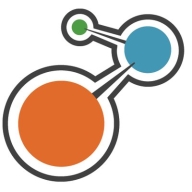

Active Risk Manager and ConvergePoint Health and Safety Software compete in the risk management sector. Data comparisons indicate that ConvergePoint stands out for user-centric design and integration ease, while Active Risk Manager is notable for its customization and reporting features.
Features:Active Risk Manager offers customizable reporting, detailed risk assessment tools, and analytical capabilities. ConvergePoint Health and Safety Software provides comprehensive compliance management, seamless integration capabilities, and process automation.
Ease of Deployment and Customer Service:ConvergePoint Health and Safety Software is distinguished by its seamless deployment and strong customer service. Active Risk Manager involves a more complex setup process but provides extensive support post-deployment.
Pricing and ROI:Active Risk Manager has a higher setup cost and is seen as providing long-term value due to advanced features. ConvergePoint Health and Safety Software offers a cost-effective setup that results in a quicker ROI by enhancing operational efficiency with less overhead.
Active Risk Manager offers comprehensive risk management solutions tailored to knowledgeable professionals. It provides a structured platform to identify, assess, manage, and report risks effectively, enhancing decision-making and operational resilience.
Active Risk Manager addresses diverse business challenges with its robust features, supporting businesses in mitigating potential risks and maximizing opportunities. Known for its adaptability, it integrates seamlessly into business processes, helping organizations navigate complex risk landscapes. With its focus on proactive risk management, Active Risk Manager ensures that companies can anticipate and adapt to changing risks, thereby safeguarding their strategic objectives and daily operations.
What are the most important features of Active Risk Manager?Active Risk Manager is applied across industries like finance, healthcare, and manufacturing, where it supports compliance and risk mitigation efforts. In finance, it helps manage strategic and operational risks, while healthcare uses it to address patient safety and data protection concerns. Manufacturing relies on it to ensure safety and supply chain resilience.
We monitor all GRC reviews to prevent fraudulent reviews and keep review quality high. We do not post reviews by company employees or direct competitors. We validate each review for authenticity via cross-reference with LinkedIn, and personal follow-up with the reviewer when necessary.